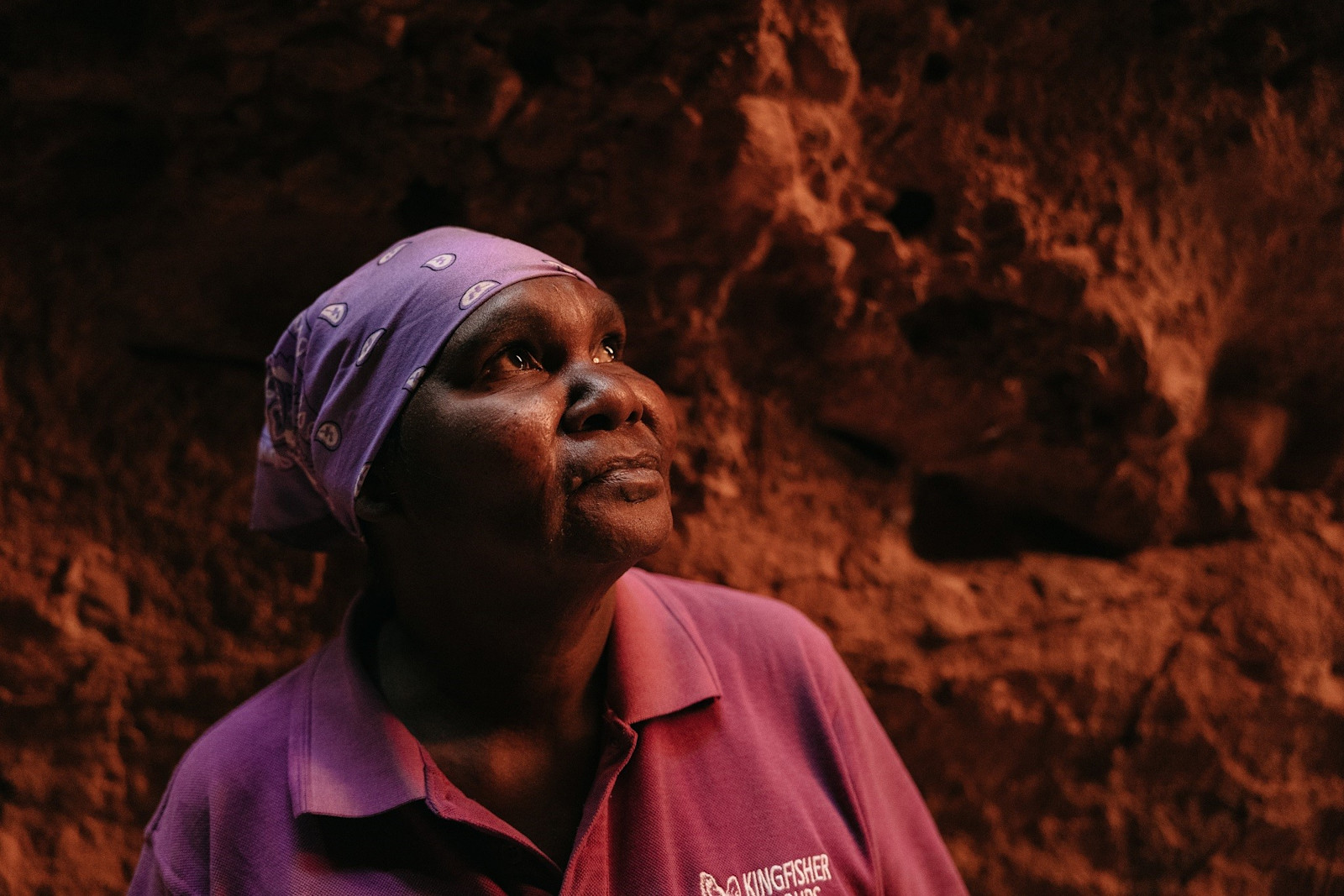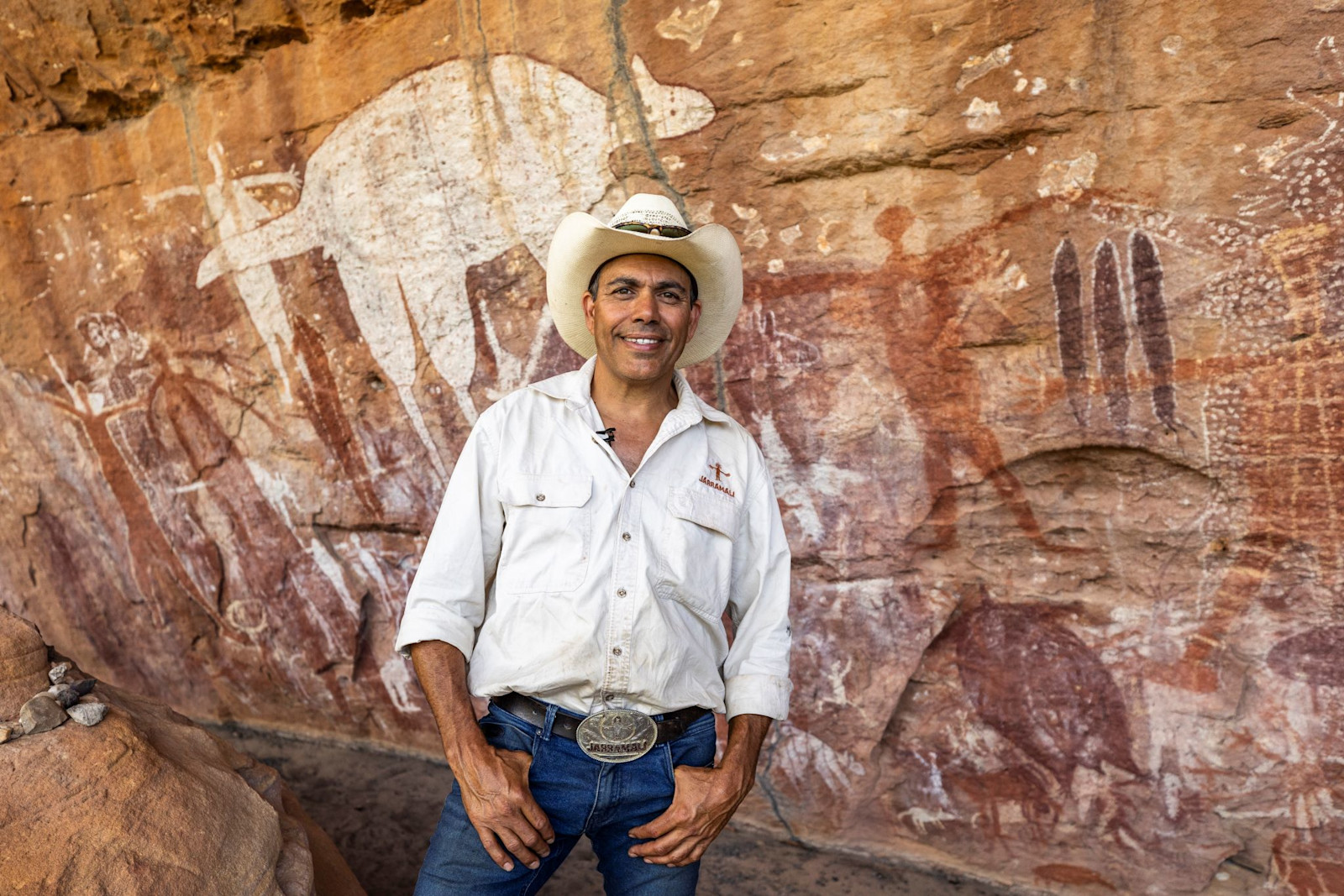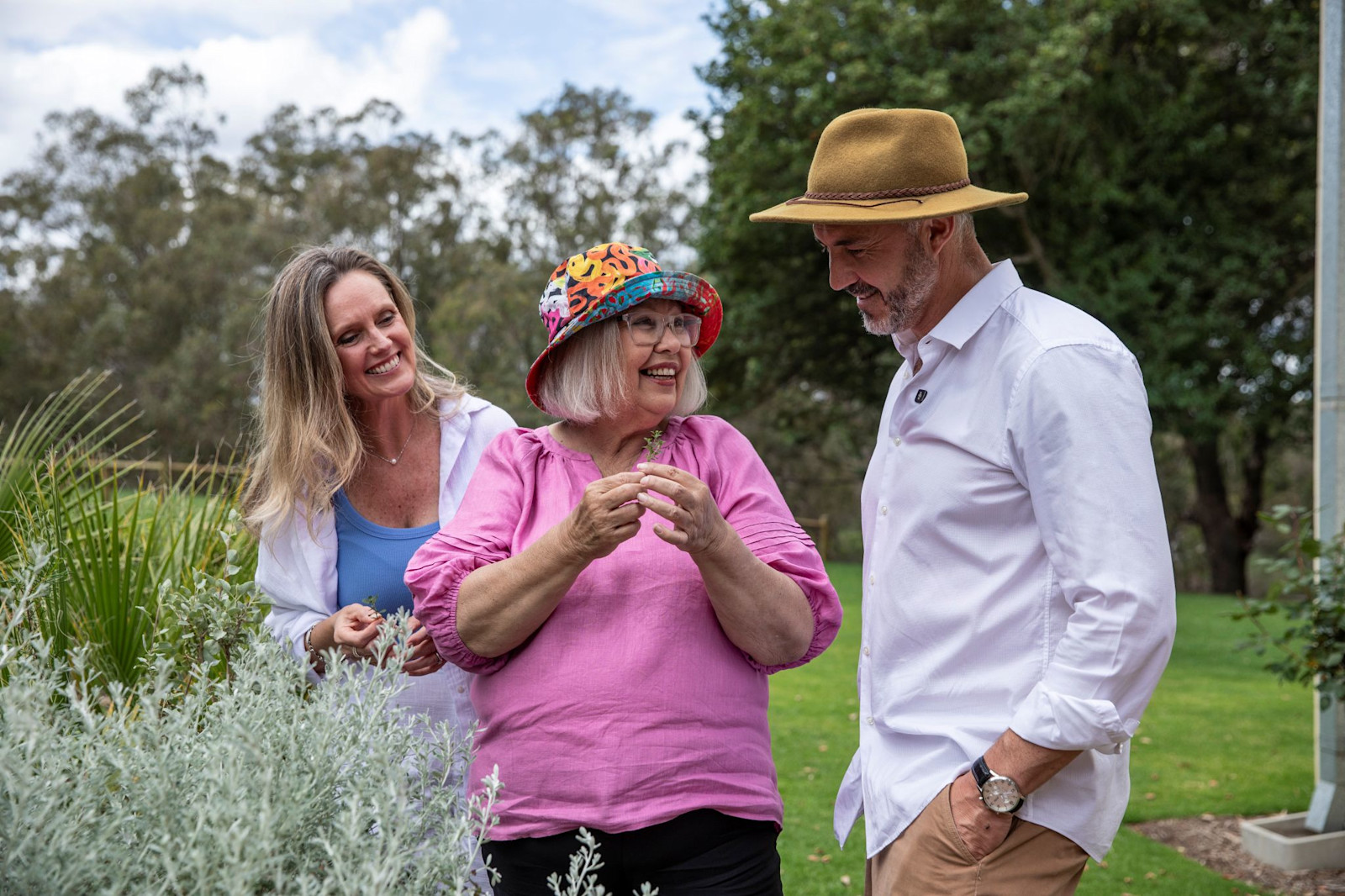Guide to the cassowary in Aboriginal cultures
Fun facts about the cassowary

Cassowary, FNQ Nature Tours, Tropical North Queensland © FNQ Nature Tours
What is a cassowary?
“You don’t want to touch those, let alone eat them,” says Kuku Yalanji man and Mossman Gorge Cultural Centre guide Levi Williams, pointing to a bright blue egg-shaped fruit on the rainforest floor. “Cassowary plums are extremely toxic,” he explains. “Only the cassowary can digest them.” It’s just one fun fact you’ll learn about the culturally significant cassowary on an Aboriginal tour in Queensland’s World Heritage-listed Daintree Rainforest.
Native to the tropical rainforests of northern Queensland, the southern cassowary is a large, black flightless bird with bright blue skin on its neck and a pronounced red wattle. Standing up to 175 centimetres tall, these dinosaur-like creatures have three-toed feet with sharp claws and a helmet-like casque thought to act as a thermal radiator. Unprovoked, cassowaries are fairly shy and peaceful. Stay safe and refrain from approaching or feeding them.
Why are cassowaries culturally significant?
Cassowaries play an important role in maintaining the diversity of the rainforest by dispersing the seeds of more than 70 species of trees whose fruit is too large for any other forest dwelling animal to eat and relocate. The ‘rainforest gardening’ skills of the cassowary play into its cultural significance to the Aboriginal cultures of northern Queensland, who have customs, stories, songs and dances about them. For millennia, the cassowary has helped to ensure a sustainable supply of plants that Aboriginal people have traditionally used for food, medicine and making tools. Cassowaries are also a prized traditional food and their feathers, claws and bones are used for ornaments and weapons.

Southern Cassowary Chick, Daintree National Park, Tropical North Queensland © FNQ Nature Tours
Where can I see cassowaries?
With an estimated 4,400 of the solitary birds quietly roaming the rainforests of northern Queensland, cassowaries aren’t always easy to spot. But the odds increase considerably when accompanied by an Aboriginal guide attuned to their natural behaviours.
It’s a special moment to spot a cassowary on a full-day tour of Cape Tribulation at the heart of the Daintree Rainforest with Walkabout Cultural Adventures. Learn how the local Kuku Yalanji utilised and managed the rainforest’s natural resources on a guided walk while keeping an eye out for the elusive kurranji, the Kuku Yalanji language word for cassowary.
You may also be lucky enough to spot a cassowary patrolling the rainforest at Mossman Gorge on a self-guided visit, on a Dreamtime Walk with the Mossman Gorge Cultural Centre, or on a guided tour with Down Under Tours – Daintree Dreaming.

Aboriginal art workshop, Janbal Gallery, Mossman, Tropical North Queensland © Tourism Australia
Learn more about the role of the cassowary in Aboriginal culture at Janbal Gallery. During an Aboriginal art workshop hosted by acclaimed Kuku Yalanji artist Brian ‘Binna’ Swindley, you might choose to apply an Aboriginal symbol of the cassowary – a common theme in Binna’s artworks – to your own piece of art to take home.












